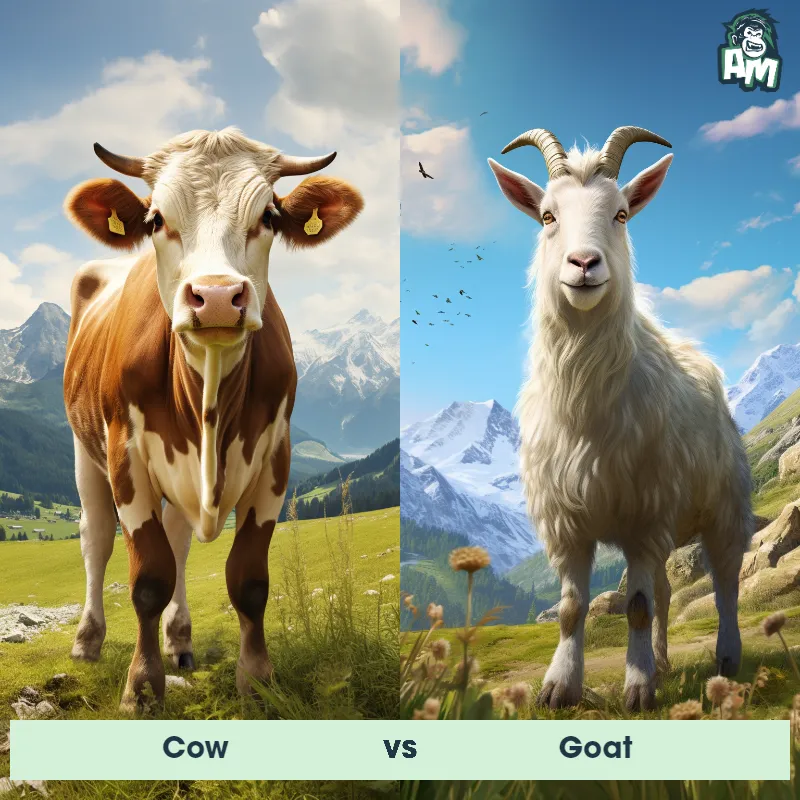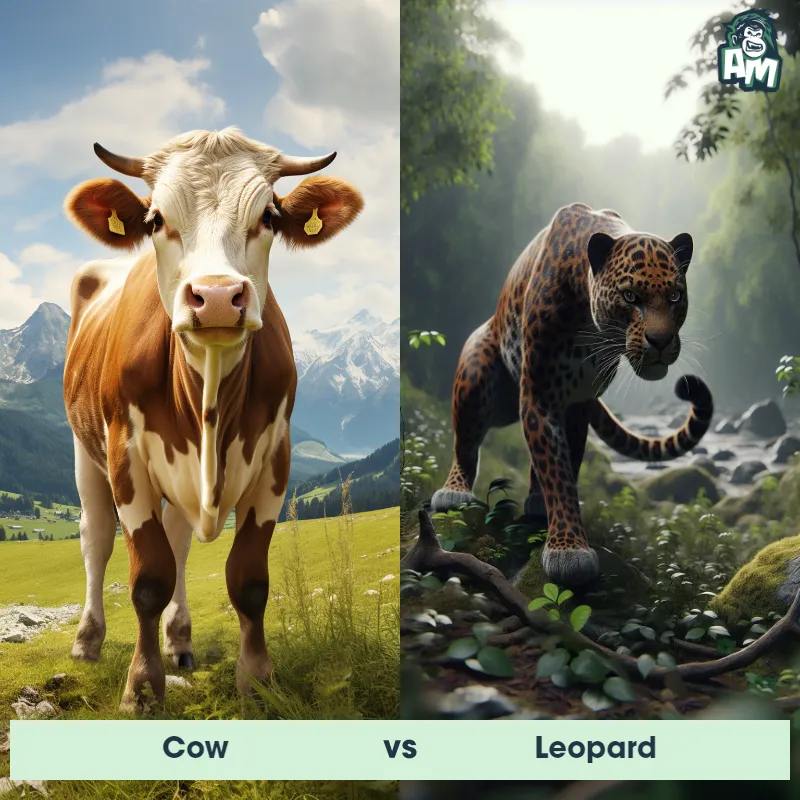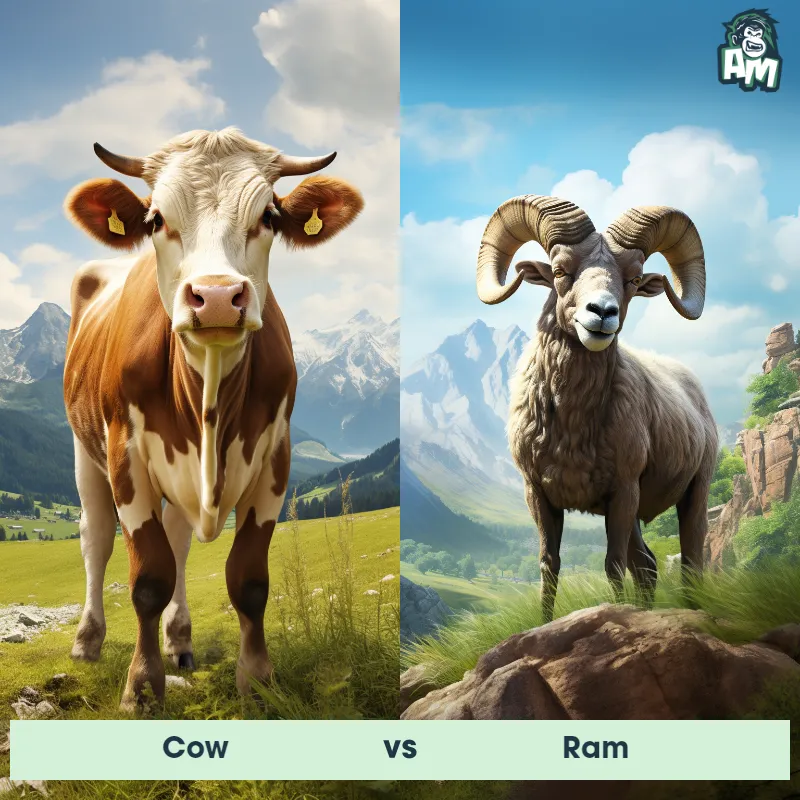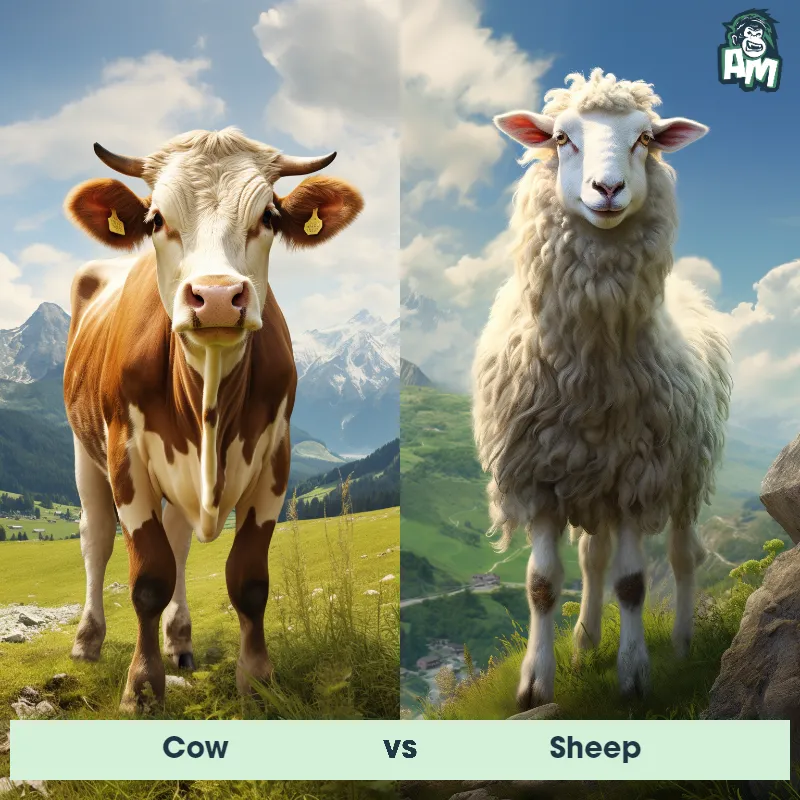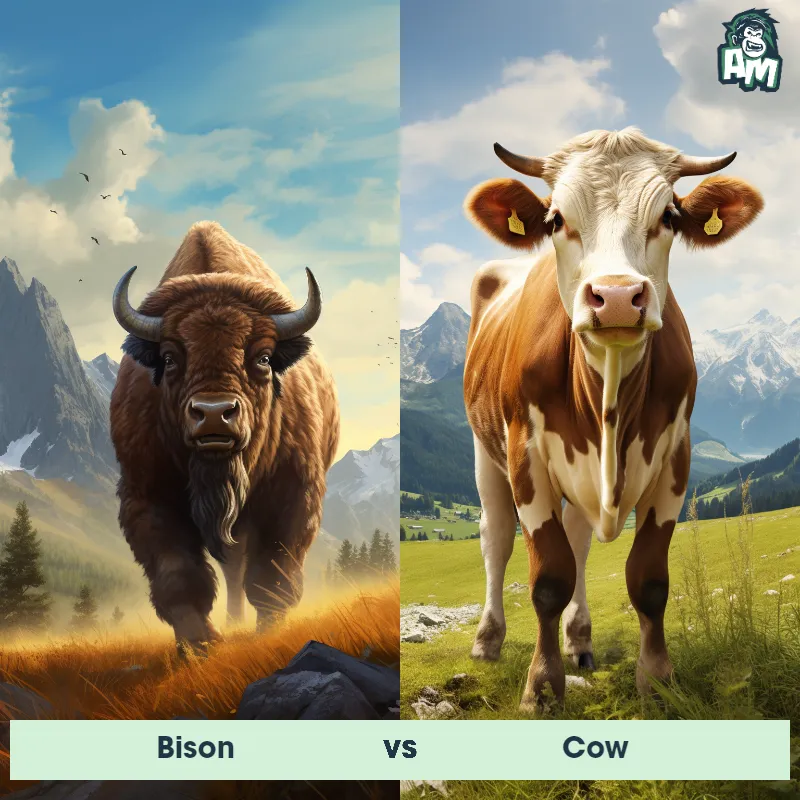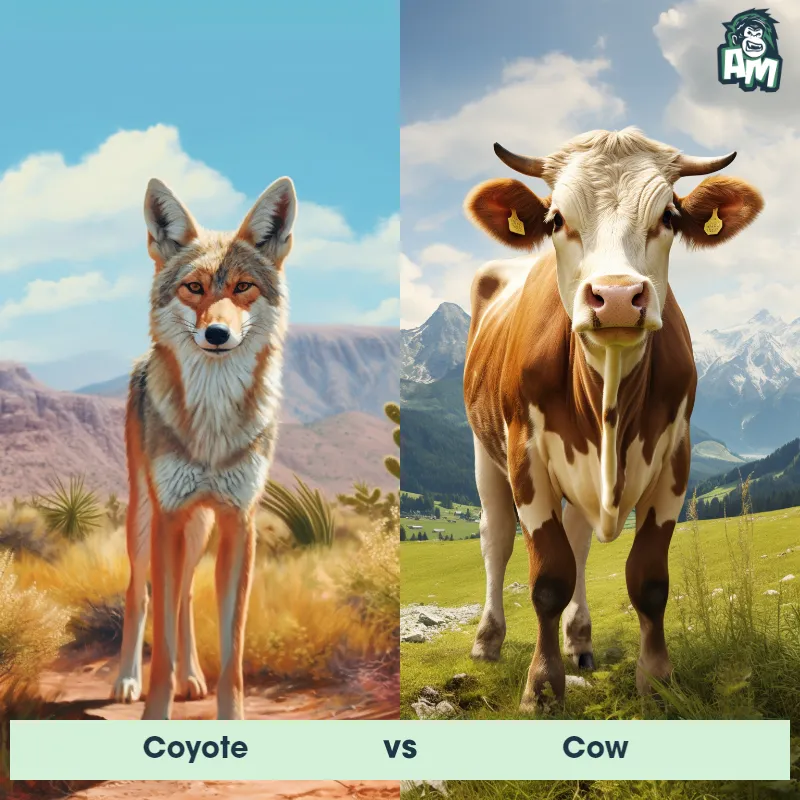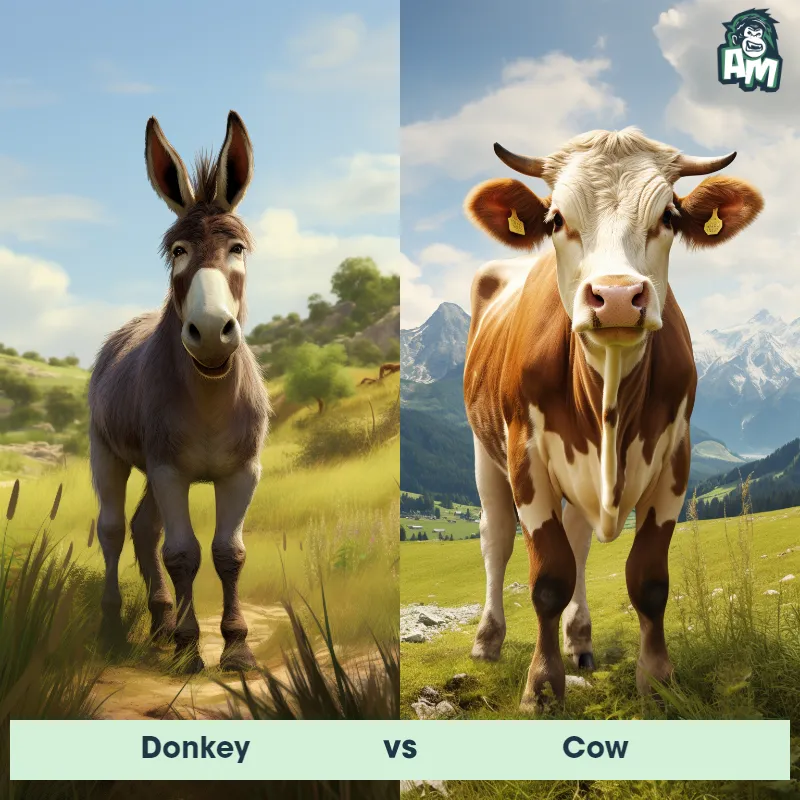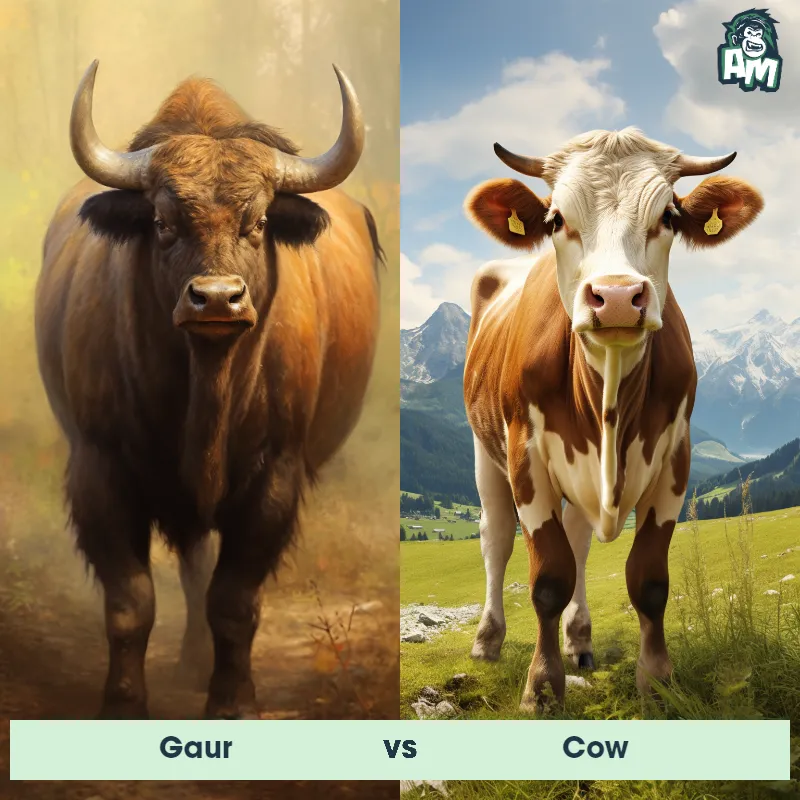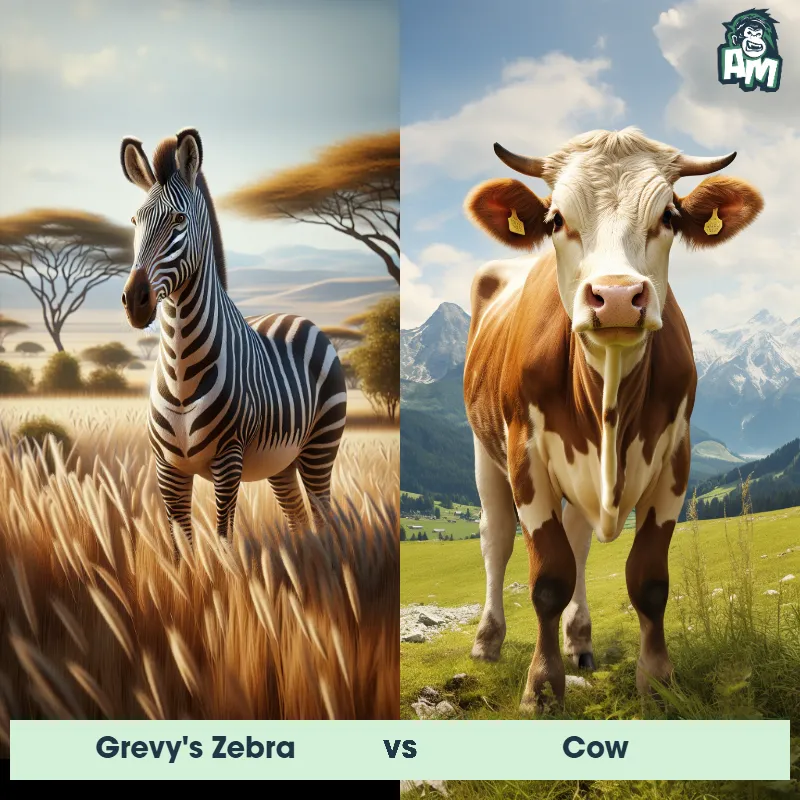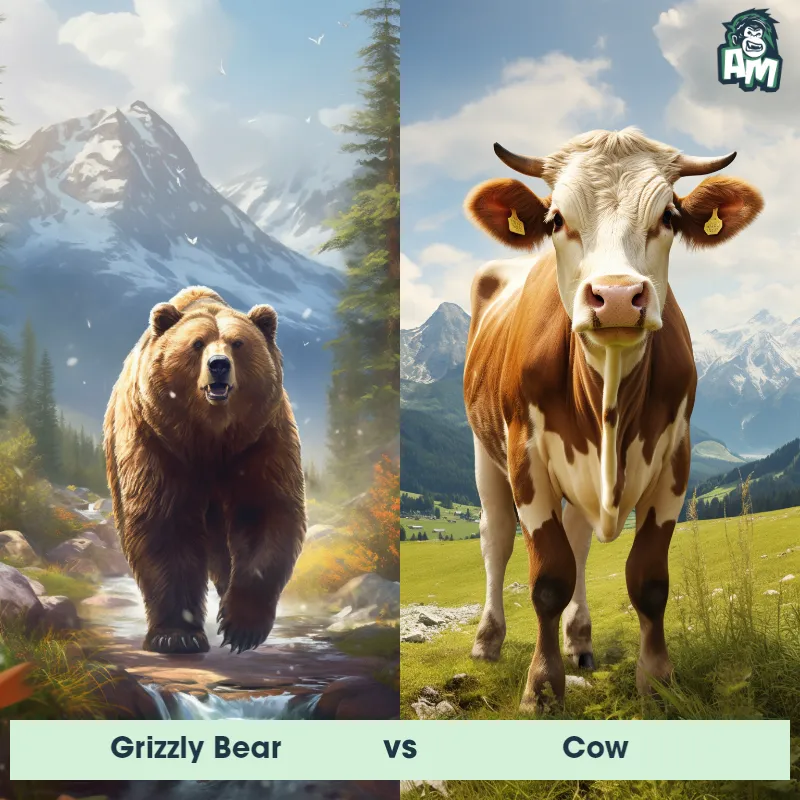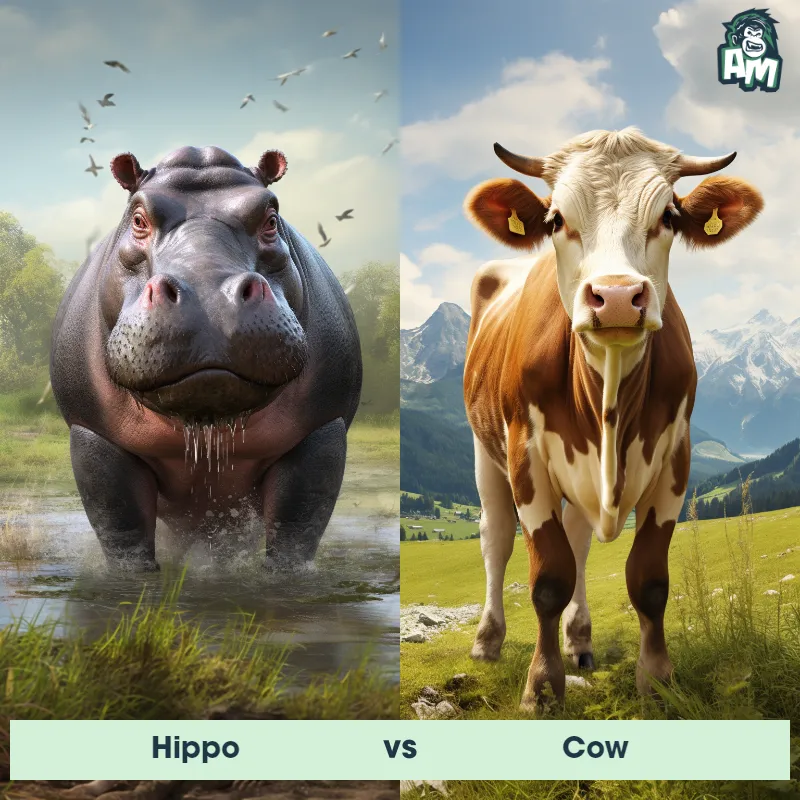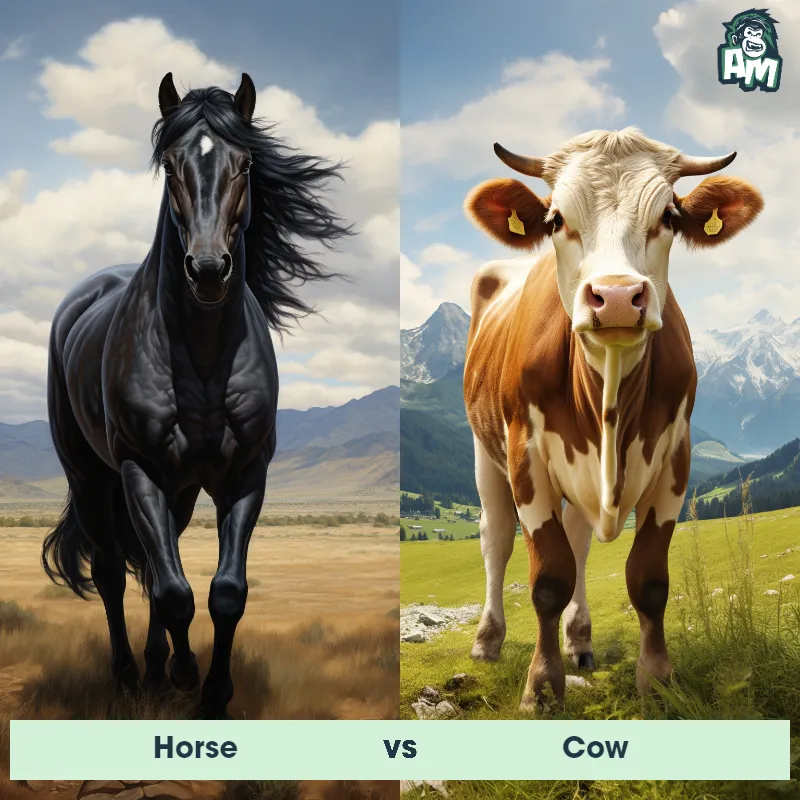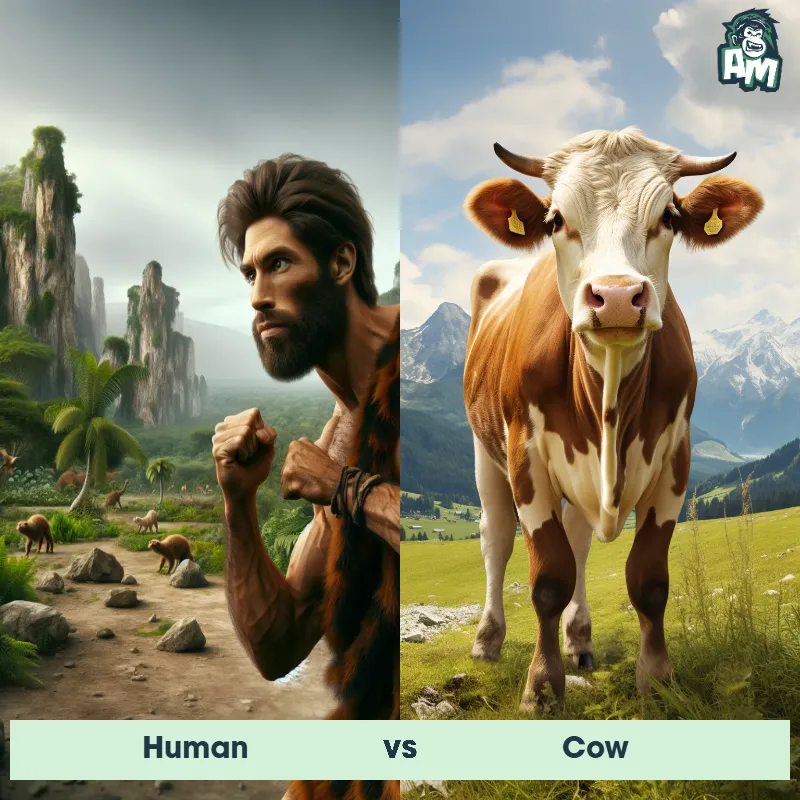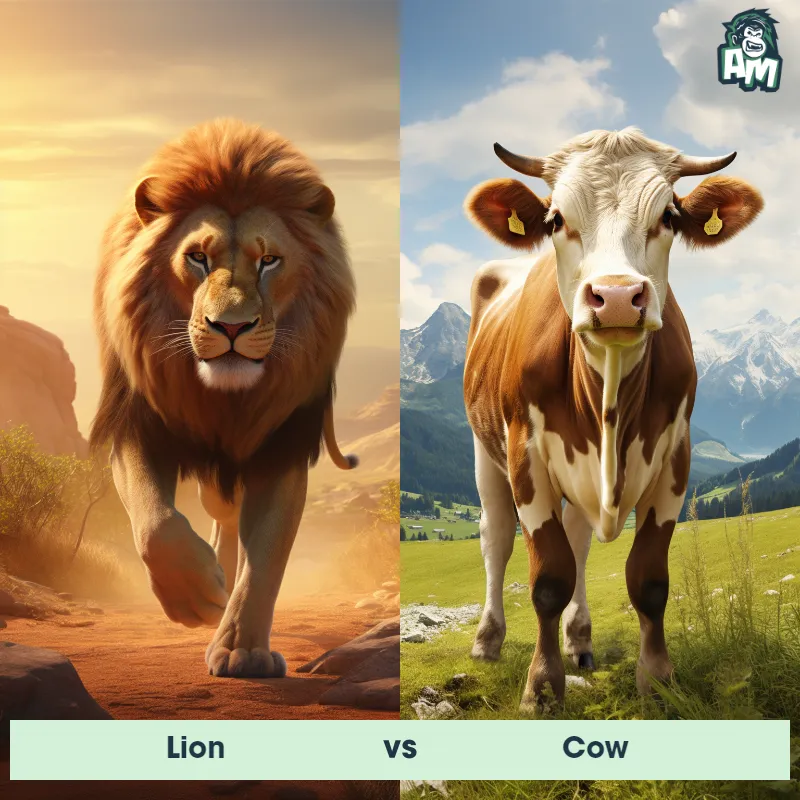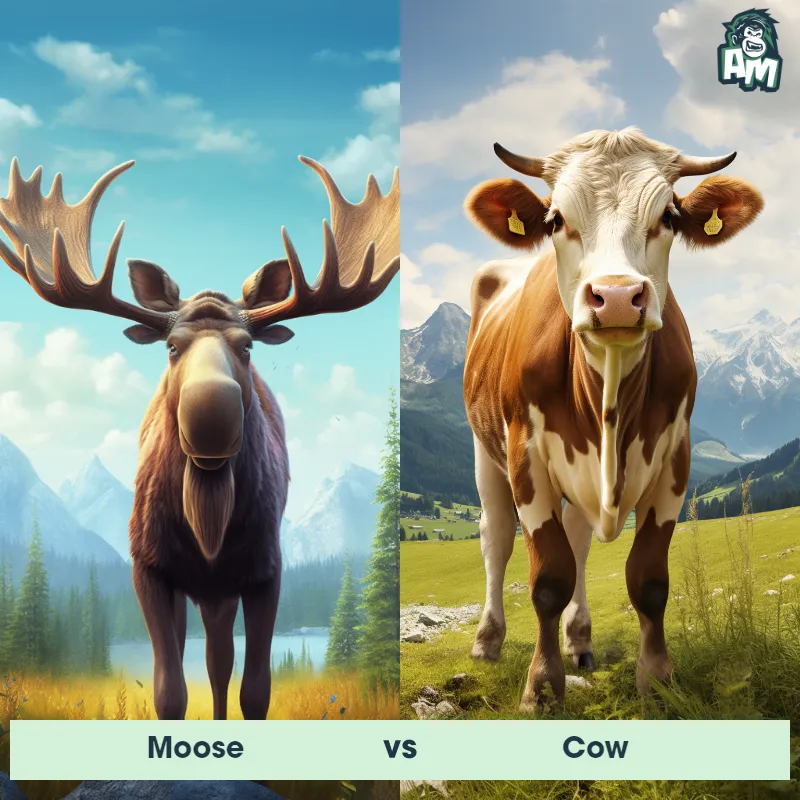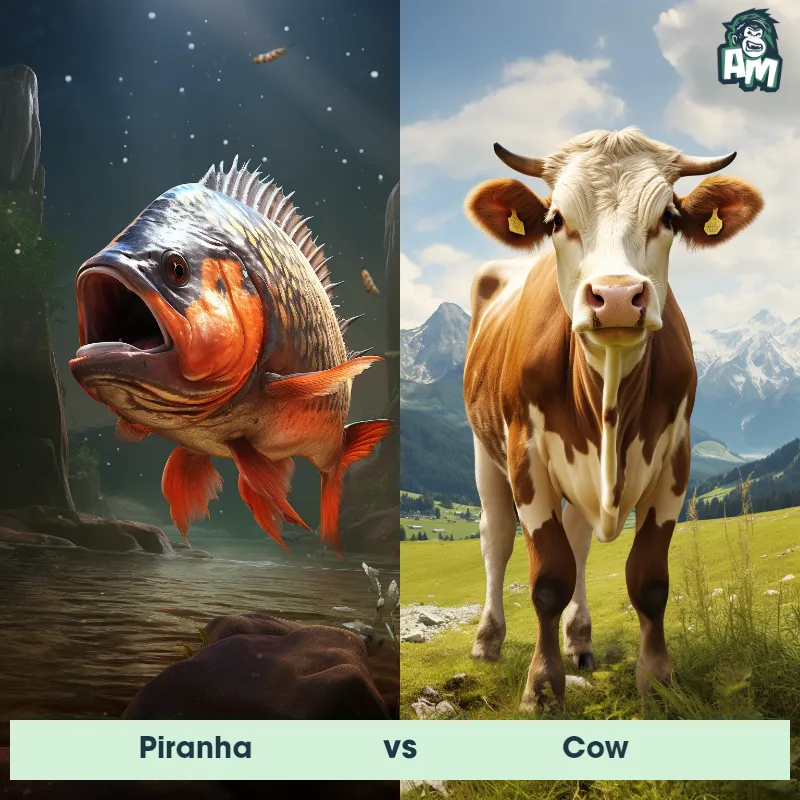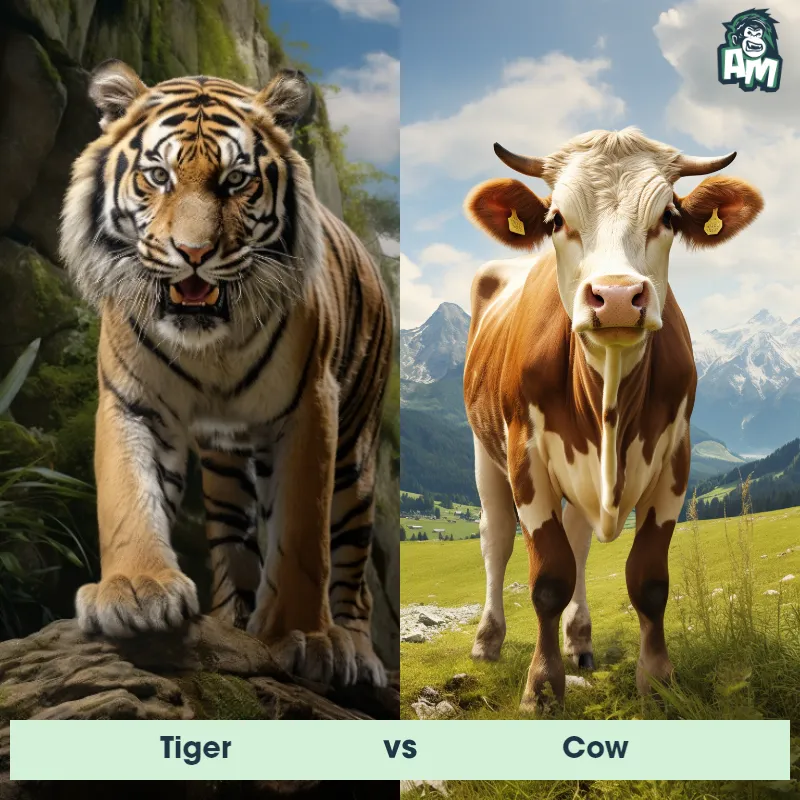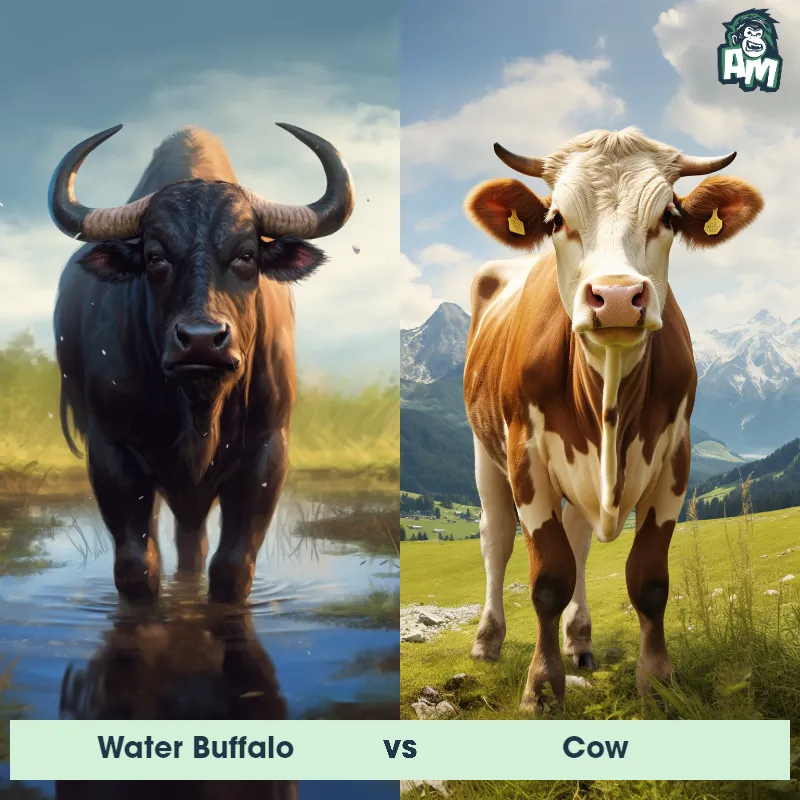The Cow
The cow, also known as Bos taurus, is a large domesticated ungulate that is commonly bred for its meat, milk, and other dairy products. They have a sturdy build with a rounded body, a long snout, and upward-curving horns. Cows typically have a bovine coloration pattern, with a white or tan base coat and spots or patches of other colors. They are herbivorous animals with a complex digestive system that allows them to efficiently digest plant materials, such as grass and hay. Cows are social animals and are often found in herds, grazing in pastures or roaming in open fields.
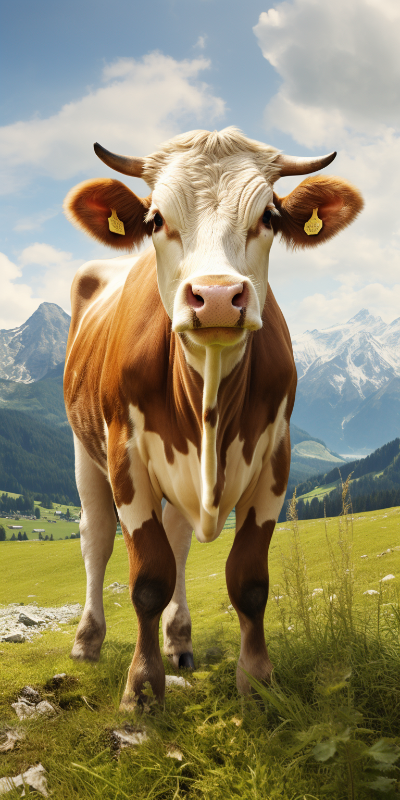
| Cow | |
|---|---|
| Size | 4.9 feet at shoulder height (1.5 meters) |
| Weight | 1,600 pounds (725 kilograms) |
| Speed | 25 mph (40 km/h) |
| Key Strength | Size and Weight |
| Biggest Weakness | Slow Speed |
| Scientific Name | Bos taurus |
| Family | Bovidae |
| Habitat | Grasslands, Pastures |
| Geography | Worldwide |
| Diet | Herbivore (Grasses, Hay) |
| Lifespan | 15 years - 25 years |

The Cow
The cow, also known as Bos taurus, is a large domesticated ungulate that is commonly bred for its meat, milk, and other dairy products. They have a sturdy build with a rounded body, a long snout, and upward-curving horns. Cows typically have a bovine coloration pattern, with a white or tan base coat and spots or patches of other colors. They are herbivorous animals with a complex digestive system that allows them to efficiently digest plant materials, such as grass and hay. Cows are social animals and are often found in herds, grazing in pastures or roaming in open fields.
Fun Fact: Cows have excellent sense of smell and can detect odors from up to 6 miles away.
| Cow | |
|---|---|
| Size | 4.9 feet at shoulder height (1.5 meters) |
| Weight | 1,600 pounds (725 kilograms) |
| Speed | 25 mph (40 km/h) |
| Key Strength | Size and Weight |
| Biggest Weakness | Slow Speed |
| Scientific Name | Bos taurus |
| Family | Bovidae |
| Habitat | Grasslands, Pastures |
| Geography | Worldwide |
| Diet | Herbivore (Grasses, Hay) |
| Lifespan | 15 years - 25 years |
Cow Matchups
We use AI to simulate matchups between the Cow and other animals. Our simulation considers size, strength, and natural predatory behaviors to determine the most likely outcome.
Cow: Diet, Predators, Aggression, and Defensive Behaviors
What do cows eat?
Cows are herbivores that mainly feed on grass, hay, and silage. They have a specialized digestive system that allows them to efficiently break down plant material and extract nutrients from it.
Do cows have any predators?
Cows do not have many natural predators due to their large size and herding behavior. However, young calves may be targeted by predators such as wolves, coyotes, and mountain lions.
Are cows aggressive?
Cows are generally docile animals and not known for being aggressive. However, they can become protective of their calves or territorial if they feel threatened.
Do cows fight?
Cows may engage in physical confrontations with each other, especially during breeding season or when establishing dominance within a herd. These conflicts typically involve pushing or butting heads rather than causing serious harm.
How do cows defend themselves?
Cows have several defense mechanisms to protect themselves from threats. When feeling threatened, they may use their horns to ward off predators or other cows. Additionally, they may kick or trample if they feel cornered or in danger.
What is a cow's biggest weakness in a fight?
A cow's biggest weakness in a fight is their relatively slow speed and agility compared to other predators or animals. While they are strong and have sharp horns, they may struggle to evade attacks or maneuver quickly in a fight.
Fun Fact: Cows have a multi-chambered stomach called a rumen, which allows them to break down cellulose-rich plant material through a process called rumination.
Fun Fact: Cows have a unique and individualized vocalization pattern called "moo", which they use to communicate with other members of their herd and express different emotions, such as distress, contentment, or seeking attention.



